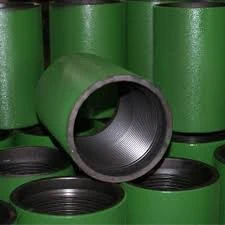- Afrikaans
- Albanian
- Amharic
- Arabic
- Armenian
- Azerbaijani
- Basque
- Belarusian
- Bengali
- Bosnian
- Bulgarian
- Catalan
- Cebuano
- Corsican
- Croatian
- Czech
- Danish
- Dutch
- English
- Esperanto
- Estonian
- Finnish
- French
- Frisian
- Galician
- Georgian
- German
- Greek
- Gujarati
- Haitian Creole
- hausa
- hawaiian
- Hebrew
- Hindi
- Miao
- Hungarian
- Icelandic
- igbo
- Indonesian
- irish
- Italian
- Japanese
- Javanese
- Kannada
- kazakh
- Khmer
- Rwandese
- Korean
- Kurdish
- Kyrgyz
- Lao
- Latin
- Latvian
- Lithuanian
- Luxembourgish
- Macedonian
- Malgashi
- Malay
- Malayalam
- Maltese
- Maori
- Marathi
- Mongolian
- Myanmar
- Nepali
- Norwegian
- Norwegian
- Occitan
- Pashto
- Persian
- Polish
- Portuguese
- Punjabi
- Romanian
- Russian
- Samoan
- Scottish Gaelic
- Serbian
- Sesotho
- Shona
- Sindhi
- Sinhala
- Slovak
- Slovenian
- Somali
- Spanish
- Sundanese
- Swahili
- Swedish
- Tagalog
- Tajik
- Tamil
- Tatar
- Telugu
- Thai
- Turkish
- Turkmen
- Ukrainian
- Urdu
- Uighur
- Uzbek
- Vietnamese
- Welsh
- Bantu
- Yiddish
- Yoruba
- Zulu
Innovative Solutions for Tubing Coupling Efficiency and Performance Enhancement
Coupling for Tubing Essential Considerations and Applications
Couplings in tubing systems are critical components that ensure the seamless connection of pipes and tubing, facilitating the effective transport of fluids and gases across various applications. Whether in oil and gas, plumbing, or industrial processes, the choice of coupling can significantly influence the overall efficiency, safety, and longevity of the system.
Understanding Tubing Couplings
A tubing coupling is a device used to connect two lengths of tubing, which may be made from various materials, including metal, plastic, or composite materials. Couplings can be categorized into several types threaded couplings, flanged couplings, slip-on couplings, and welded couplings, each serving specific functions based on the requirements of the application.
1. Threaded Couplings These are among the most common types and are widely used in plumbing and mechanical applications. They involve male and female threads that allow two tubing sections to screw together securely. This type is favorable for its ease of installation and disassembly.
2. Flanged Couplings Flanged couplings consist of two flat pieces of metal that are joined using bolts. This design provides a robust connection, making it a popular choice in high-pressure applications such as oil and gas pipelines.
3. Slip-On Couplings As the name suggests, these couplings simply slide over the ends of the tubing and are secured in place, typically with clamps or welding. They are easy to install but may not provide the same level of strength as threaded or flanged types.
4. Welded Couplings These are permanently attached to the tubing and provide exceptional strength and resistance to leaks. They are often used in high-pressure and high-temperature applications, where a robust and durable connection is critical.
Importance of Selection and Specifications
coupling for tubing

Selecting the right coupling is vital in ensuring the integrity of the entire tubing system. Factors such as the nature of the fluid being transported, pressure requirements, temperature fluctuations, and the environment (corrosive, high-temperature, etc.) all play critical roles in this decision.
- Material Compatibility It is essential to choose couplings made from materials compatible with the tubing and the transported fluid. For example, stainless steel couplings may be necessary for corrosive materials, while plastic couplings could be sufficient for water transport.
- Pressure Ratings Different couplings are rated for various pressure limits. It is crucial to select couplings that can handle the maximum operating pressure of the system to prevent failures.
- Temperature Tolerance Couplings must also withstand temperature extremes that the system may encounter. Higher temperatures may require specialized materials or designs to prevent degradation over time.
Applications of Tubing Couplings
The applications for tubing couplings are vast and varied. In the oil and gas industry, couplings are essential for connecting pipelines that transport crude oil, natural gas, and refined products. In HVAC systems, couplings help in connecting ductwork, ensuring the efficient flow of air. Additionally, couplings are frequently used in pharmaceutical manufacturing, chemical processing, and food and beverage industries, where hygiene and safety standards are paramount.
Conclusion
Coupling for tubing is an integral part of fluid and gas transport systems across many industries. Understanding the different types of couplings, their specifications, and applications is crucial for anyone involved in the design, maintenance, or operation of these systems. By carefully selecting the right coupling, one can enhance the efficiency, reliability, and safety of piping installations, ultimately contributing to the success of various industrial processes. As technology progresses, innovation in coupling designs will continue to shape the future of tubing systems, making them even more effective and adaptable to changing needs.
-
Well Casing Extension Couplings – Applications and InstallationNewsJun.06,2025
-
Types of Crossover Subs in Drilling & CompletionNewsJun.06,2025
-
Key Features of High-Quality Tubing Pup JointsNewsJun.06,2025
-
Installation and Maintenance Tips for Steel Couplings for PipeNewsJun.06,2025
-
How to Select the Right Pup Joint for Oil & Gas OperationsNewsJun.06,2025
-
Applications of Stainless Steel Pipe CouplingsNewsJun.06,2025







